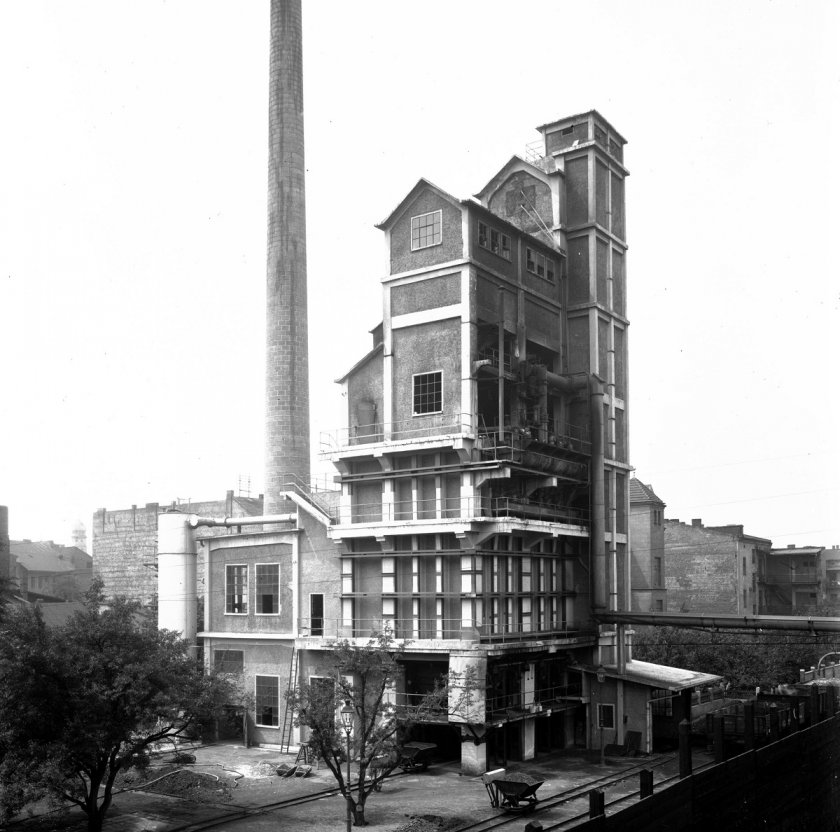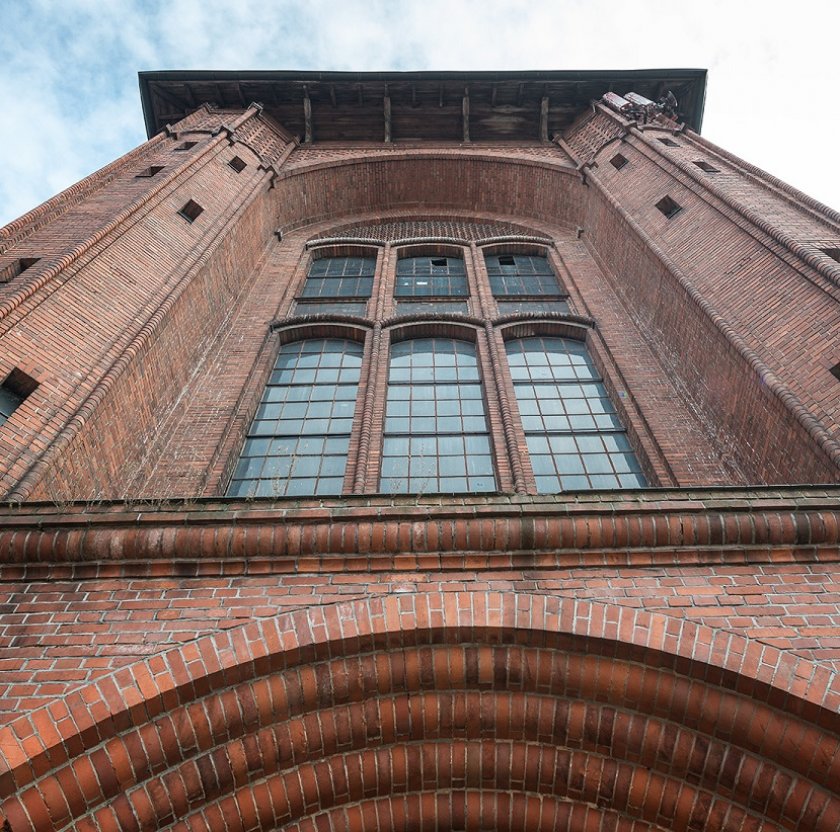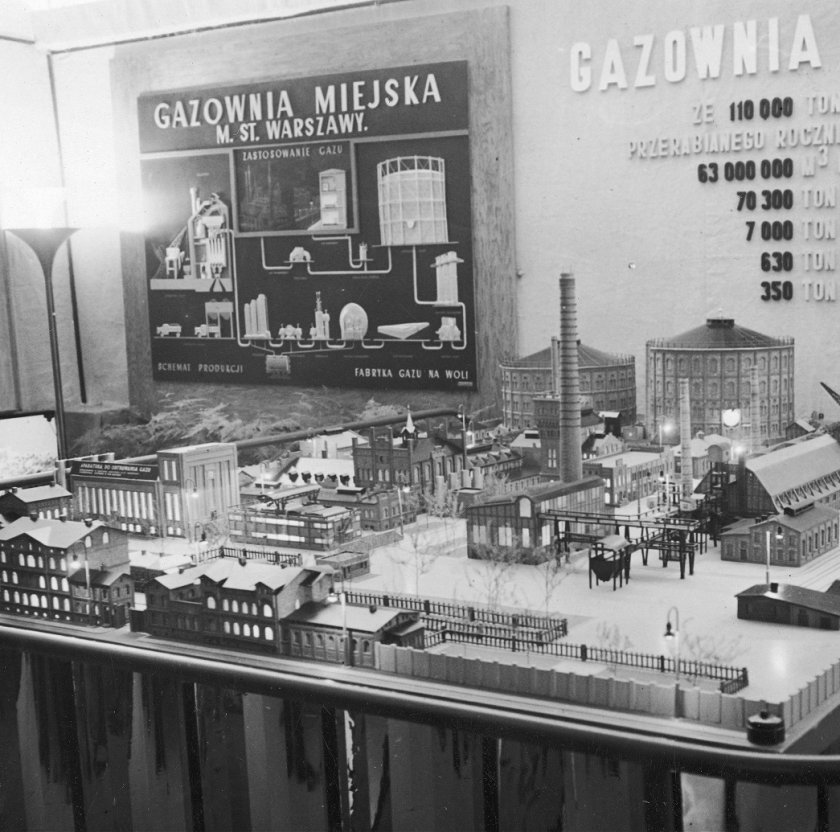date added:
08.07.2019
History of Łódź Gasworks
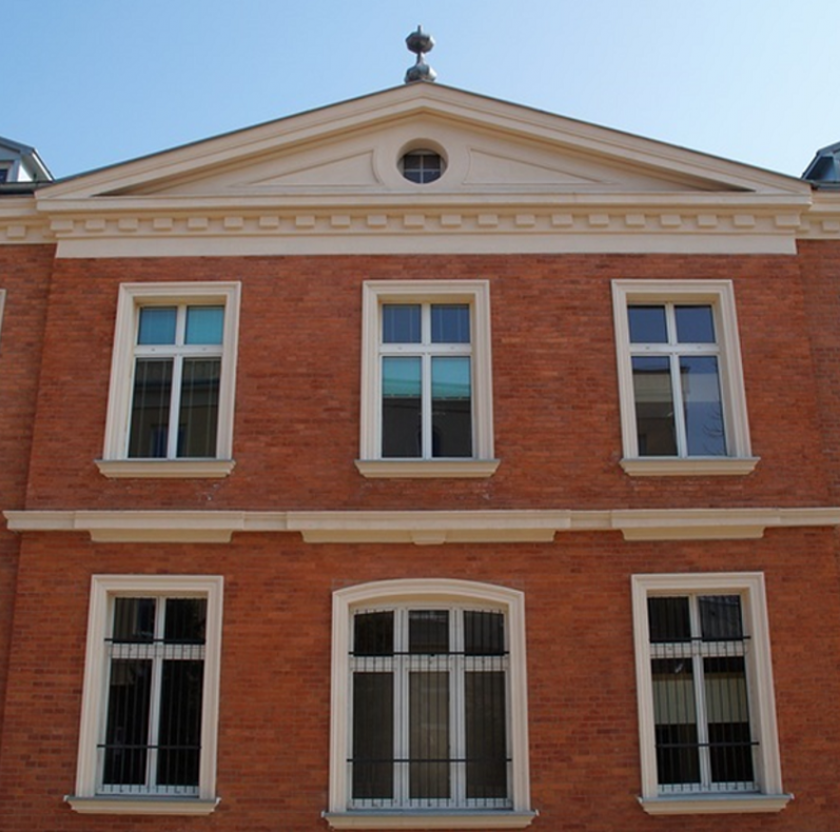 Fot.
Fot.
Gradually, this trend also began to be noticeable in areas under the Russian partition. Eleven years after the launch of the gasworks in Warsaw in 1856, the foundations for the Municipal Gasworks in Łódź were laid.
The resolution of the City Council on replacing reflector lanterns (fitted with a concave metallic mirror) of March 1867 resulted in a contract for the construction of a gasworks signed in June of the same year.
Initially, the construction site was to be the present-day John Paul II Cathedral Square; however, the decision on the location of Łódź Gasworks was made dependent on the location of the planned Łódź Fabryczna railway station, in order to facilitate the transport of coal. Ultimately, a square located at Targowa Street was chosen for the investment.
The concession for lighting the city of Łódź for a period of 40 years was granted to William Cartwright Holmes & Co. After that time, the gasworks and the gas network were to become the property of the city free of charge.
Initially, the construction site was to be the present-day John Paul II Cathedral Square; however, the decision on the location of Łódź Gasworks was made dependent on the location of the planned Łódź Fabryczna railway station, in order to facilitate the transport of coal. Ultimately, a square located at Targowa Street was chosen for the investment.
The concession for lighting the city of Łódź for a period of 40 years was granted to William Cartwright Holmes & Co. After that time, the gasworks and the gas network were to become the property of the city free of charge.
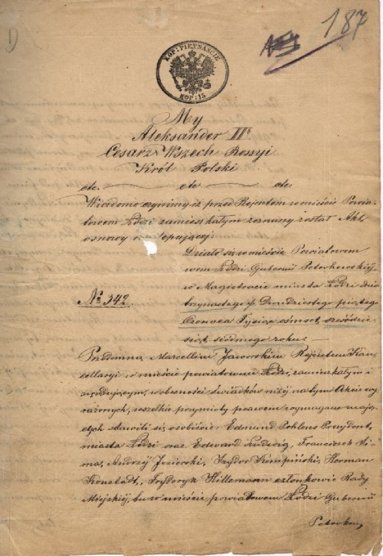
The contract concluded between the authorities
of the city of Łódź and W.C. Holmes & Co.,
granting the company from London a licence to
provide gas lighting in the city; Łódź City Records
The gas complex built by the London company consisted of a hall for gas cleaning and cooling, an office building, a mechanical department, and a chimney. The city was first supplied with gas two years after the construction contract was signed – on 25 June 1869, while the streets were lit with gas on 13 July 1869.
Shortly afterwards, the Łódź Gas Association was established in Hamburg, to which the London company sold its concession and the gas company located in Łódź. On 26 June 1909, the Łódź Gas Association ceded the gasworks to the Łódź municipal authorities. Later, these authorities temporarily leased it to the Consortium of Lease Holders, which was a joint-stock company made up of Łódź citizens. Polish language and customs were introduced in the company.
Shortly afterwards, the Łódź Gas Association was established in Hamburg, to which the London company sold its concession and the gas company located in Łódź. On 26 June 1909, the Łódź Gas Association ceded the gasworks to the Łódź municipal authorities. Later, these authorities temporarily leased it to the Consortium of Lease Holders, which was a joint-stock company made up of Łódź citizens. Polish language and customs were introduced in the company.
This was because up until that moment, all correspondence and internal documents were drafted in the German language, and German was also used in relation to the gasworks employees. Official documents, in turn, were drafted in Russian. On 14 April 1920, Łódź Gasworks was handed over to the municipal administration.
In 1909, there were as many as 2,313 gas street lamps in Łódź. Over the coming years, the Municipal Gasworks in Łódź experienced successes and was also forced to deal with failures. A period of rapid growth was followed by stagnation which resulted, among others, from the need to compete with a new type of energy, namely electricity. The permanent concession, which gave Łódź Gasworks the exclusive right to provide lighting of streets and public squares in the city, expired in 1908. Moreover, the First World War introduced major disruptions to the operation of the gasworks – its production fell, and its pre-war capacity was only achieved in 1922.
In 1909, there were as many as 2,313 gas street lamps in Łódź. Over the coming years, the Municipal Gasworks in Łódź experienced successes and was also forced to deal with failures. A period of rapid growth was followed by stagnation which resulted, among others, from the need to compete with a new type of energy, namely electricity. The permanent concession, which gave Łódź Gasworks the exclusive right to provide lighting of streets and public squares in the city, expired in 1908. Moreover, the First World War introduced major disruptions to the operation of the gasworks – its production fell, and its pre-war capacity was only achieved in 1922.
A fact worth mentioning was that already before the war Łódź Gasworks managed the only laboratory in Poland which studied the production of illuminating gas. This facility was set up on the initiative and effort of engineer Czesław Świerczewski, director of the gasworks between 1909 and 1920, and was managed by engineer Aleksander Ekerkunst. The laboratory conducted practical and scientific research, examining, among others, the calorific value of gas.
Great importance was attached to acquiring new gas consumers and finding novel ways of using gas. In 1926, the gasworks opened a store at 40 Piotrkowska Street. This store repeatedly advertised in the press and sold all kinds of gas tools and accessories, often holding cooking, baking and ironing presentations using gas.
Great importance was attached to acquiring new gas consumers and finding novel ways of using gas. In 1926, the gasworks opened a store at 40 Piotrkowska Street. This store repeatedly advertised in the press and sold all kinds of gas tools and accessories, often holding cooking, baking and ironing presentations using gas.
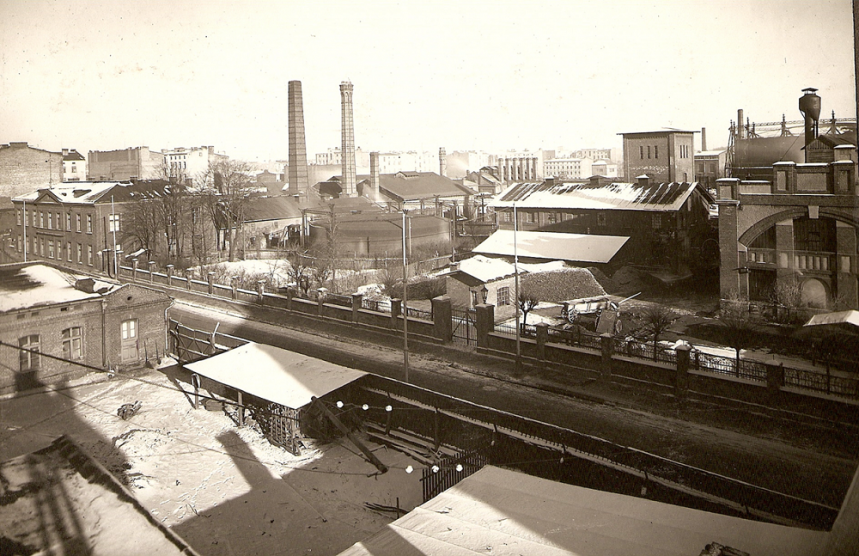
Panorama of Łódź Gasworks seen from
Targowa Street, start of the 20th century.
Photo: Łódź Gasworks Archives
The interwar period proved quite challenging for Łódź Gasworks. After 1920, there was a regress in the gasification of the city. The length of gas pipes in Łódź was only 172 km, while the average gas consumption per person was 13.5 m³ per year (for comparison, the value for Poznań was 100 m³ per year per person). The number of inhabitants per one gas meter in Łódź fluctuated around 23 people, while in Poznań it was less than seven people.
During the Nazi occupation, the working conditions and the personnel composition also changed. The Polish population was terrorised with many of the workers sent to concentration camps. At the end of 1944, many devices were dismantled and taken to Germany. It should be mentioned that Polish workers in Łódź Gasworks were involved in underground activities during the war. This was particularly challenging, as the city had a high number of German inhabitants.
During the Nazi occupation, the working conditions and the personnel composition also changed. The Polish population was terrorised with many of the workers sent to concentration camps. At the end of 1944, many devices were dismantled and taken to Germany. It should be mentioned that Polish workers in Łódź Gasworks were involved in underground activities during the war. This was particularly challenging, as the city had a high number of German inhabitants.
In the post-war period, the gasworks was expanded and modernised – technologically advanced solutions of generating producer gas were introduced, as well as a new gas distribution system and a closed water circuit. Also, the plant saw the complete mechanisation of loading and unloading of gas chambers. Between 1945 and 1968, the employee numbers at the gasworks increased by 42% to 423 people, the gas network grew from 188 km to 496 km, and the production of gas increased from 10 to 110 million m³.
In 1970, the first natural gas supplies were commenced in the Łódź region. The year 1976 saw the end of town gas production by Łódź Gasworks, while coke-oven gas supplies were maintained and there was also a switch to natural gas supplies.
In 1970, the first natural gas supplies were commenced in the Łódź region. The year 1976 saw the end of town gas production by Łódź Gasworks, while coke-oven gas supplies were maintained and there was also a switch to natural gas supplies.
From that moment, Łódź Gasworks has been mainly focused on the functioning of the gas distribution system and gas house lines, as well as the distribution and sale of piped gas to customers.
The headquarters of Łódź Gasworks is still located in this original, historical place – at Targowa Street. Buildings that remember the events of 1867 have been mostly preserved to this day, and the renovation work of 2009–2014 gave them an additional lease of life. The renovated buildings have been entered in the listed building register of the city of Łódź.
The headquarters of Łódź Gasworks is still located in this original, historical place – at Targowa Street. Buildings that remember the events of 1867 have been mostly preserved to this day, and the renovation work of 2009–2014 gave them an additional lease of life. The renovated buildings have been entered in the listed building register of the city of Łódź.
